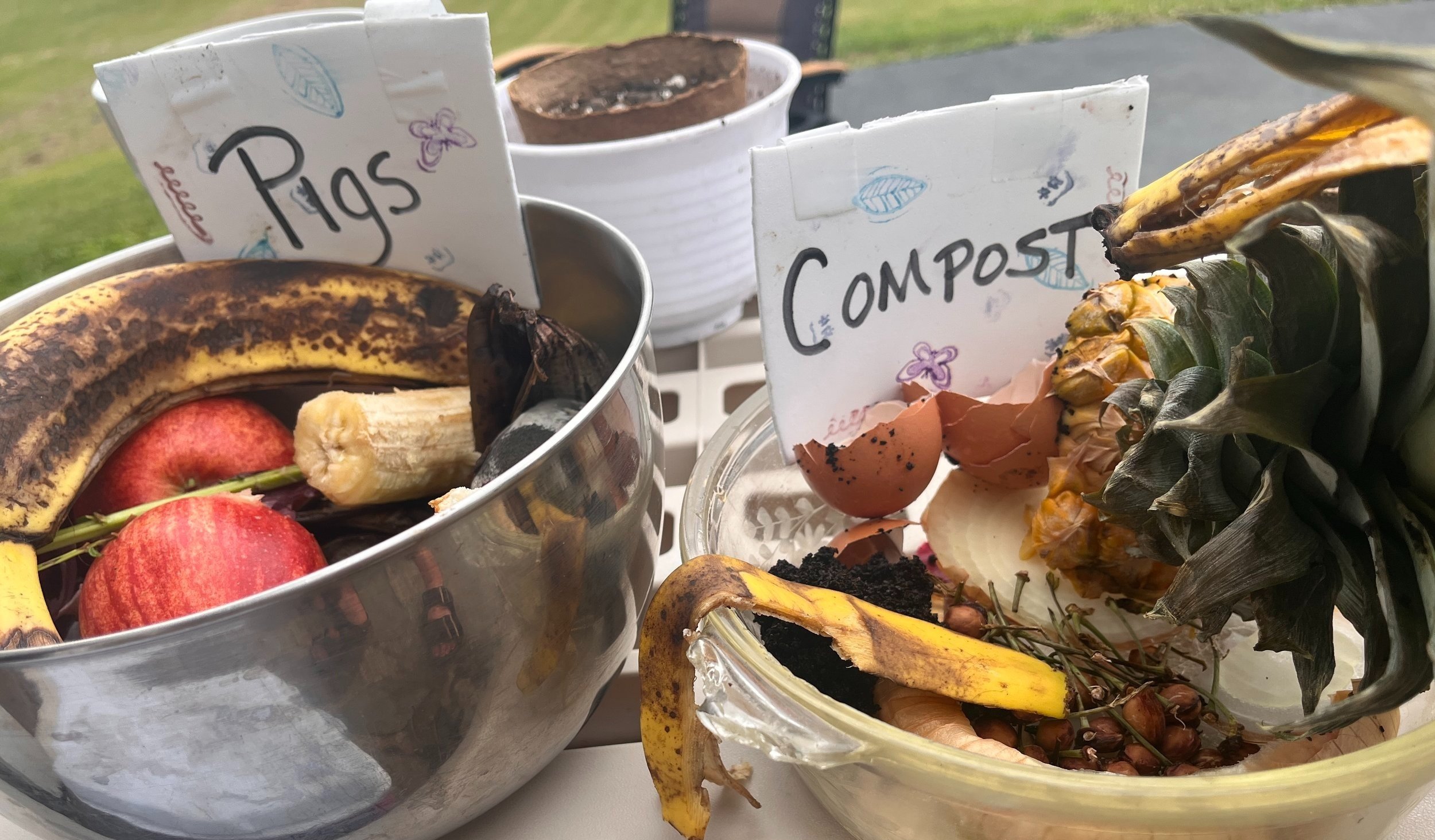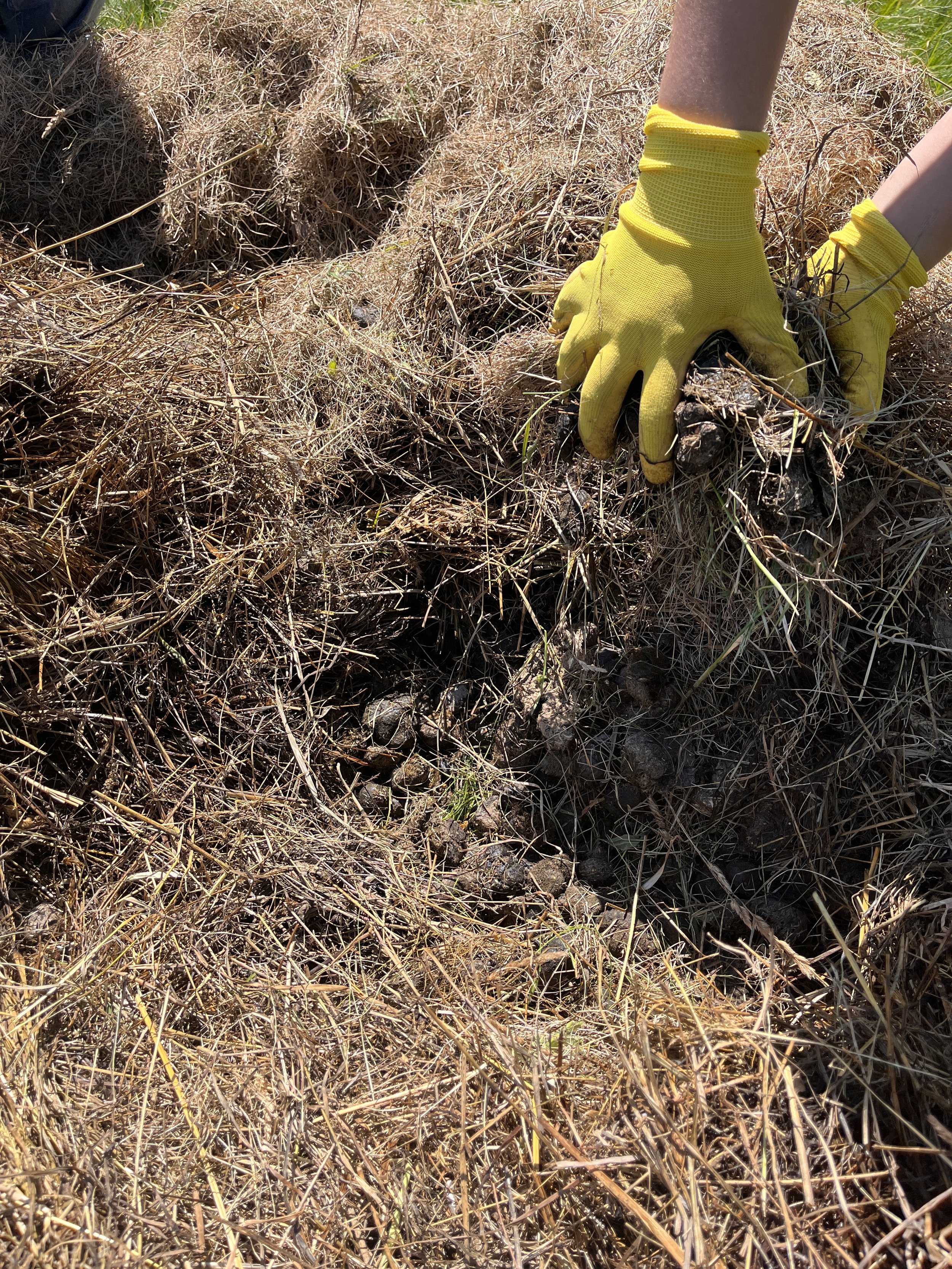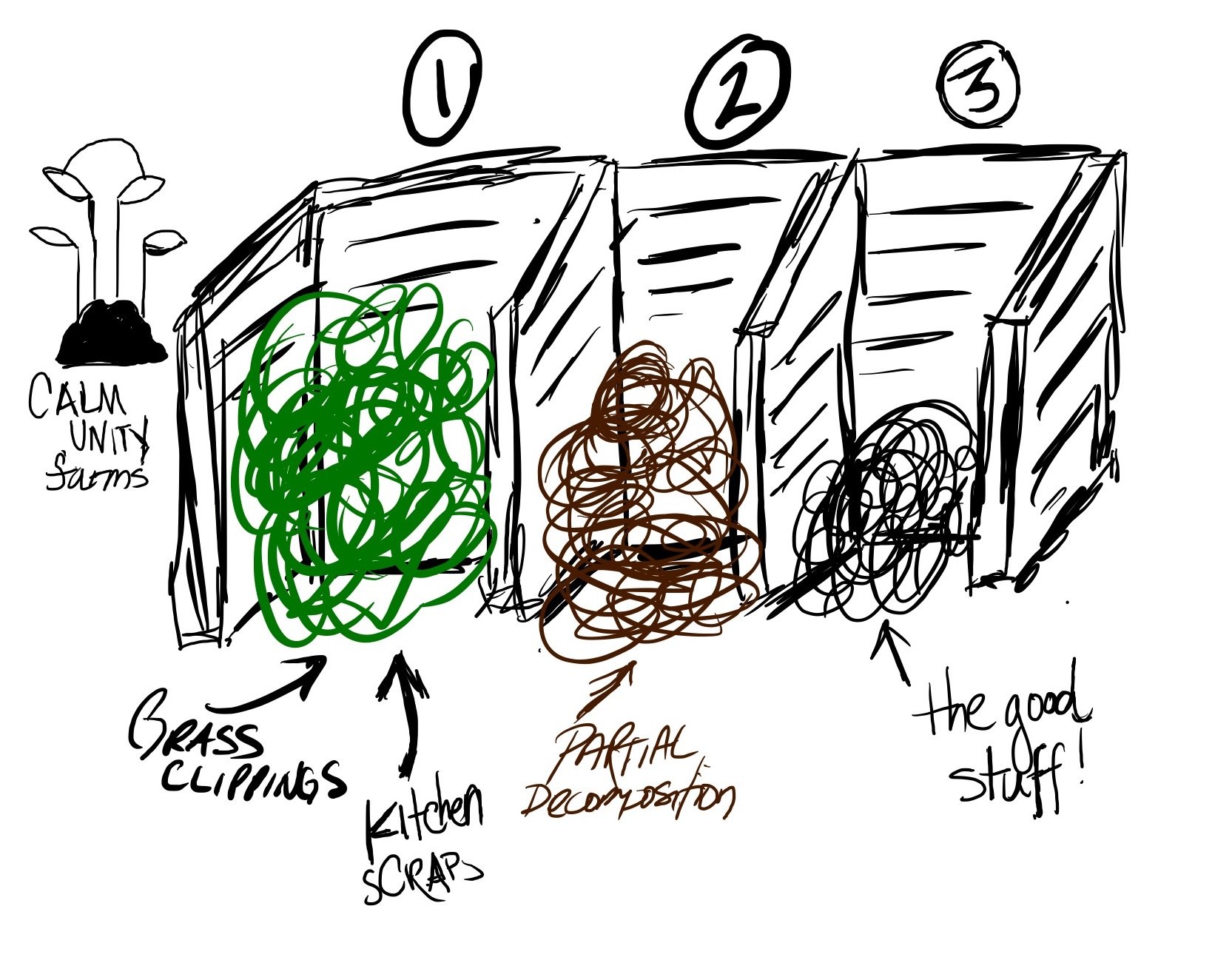
CalmPost Program
Don’t Pay to Compost
We will happily take your kitchen scraps for free and put them directly back into the local food system by feeding the KuneKune pigs who will turn them into the manure that grow the plants. They eat most anything that we eat:
Fruits and Veggies
Meat (no pork or pig products please)
Dairy
Grains (they LOVE corn—corn meal, corn on the cob, cornbread, corn pudding)
Leftover Meals (pasta with red sauce, cheese pizza, chicken stir fry)
We do not feed the pigs generic compost materials such as egg shells, coffee grounds, bones, hair/grass clippings. However, we will happily take those items separately and use them in other compost processes.
the trouble with typical composting
The 5 gallon bucket of food scraps, coffee grounds, and egg shells that seems like a LOT of potential compost (and therefore potential soil) to the average person, doesn’t really create much soil at the end of the process. (It also takes most households a long time to accumulate even 5 gallons of food waste).
The process of composting organic waste typically looks like this: (1) the food scraps are combined with other green and brown organic matter (cardboard, grass clippings, leaves) in a large pile that is turned over and watered weekly, (2) that pile is moved to a second bin once it is partially decomposed (and at this point very smelly and very hot), (3) that pile is moved to a third bin once it has become the rich black compost you buy in bags at the store. Through that process the volume of organic matter decreases drastically.
For example, from April to November 2022, we composted all of the food scraps from four vegetarian, home-cooking households (3-5 people each). All of the scraps went through the 3-bin process described above, being combined with a hefty amount of grass clippings, leaves, and cardboard along the way.
We should also mention that the process of turning compost is EXHAUSTING (it’s the least desirable job among the worker-owners of the farm—ranked well below picking up pig poop). And as you can see from a progress photo it didn’t produce very much. At the halfway mark (Middle Bin) we’re already down to a few cubic yards of material. That’s not even enough for a small home garden bed. And it will still reduce again by half by the time it moves to the third bin in November. (That said, even that small amount of compost is $200 of materials we don’t need to purchase).
Feed Pigs instead!
Feeding table scraps directly to the KuneKune pigs, rather than composting them in the usual way, improves a number of aspects of the composting process:
Reduces labor—by digesting the food, the pigs take care of the manual process of turning the compost from Bin 1 to Bin 2
Reduces feeding costs—a few pounds of table scraps per day replaces a month’s worth of corn and oat feed (saves about $100/month)
Manure adds crucial nutrients including nitrogen, phosphorous, and potassium to the soil and at a much quicker rate than traditional compost.




